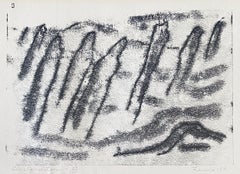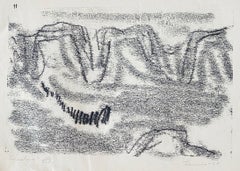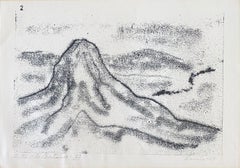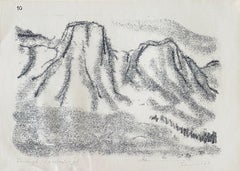Want more images or videos?
Request additional images or videos from the seller
1 of 10
Stanley Lewis"Exodus" from Wanderers Illustrations 112/2251964
1964
$350List Price
About the Item
- Creator:Stanley Lewis (1941, American)
- Creation Year:1964
- Dimensions:Height: 9.8 in (24.9 cm)Width: 13.8 in (35.06 cm)
- Medium:
- Period:
- Condition:Some minor toning. Please see photos.
- Gallery Location:Surfside, FL
- Reference Number:1stDibs: LU3826302502
About the Seller
4.9
Platinum Seller
Premium sellers with a 4.7+ rating and 24-hour response times
Established in 1995
1stDibs seller since 2014
1,843 sales on 1stDibs
Typical response time: 1 hour
Authenticity Guarantee
In the unlikely event there’s an issue with an item’s authenticity, contact us within 1 year for a full refund. DetailsMoney-Back Guarantee
If your item is not as described, is damaged in transit, or does not arrive, contact us within 7 days for a full refund. Details24-Hour Cancellation
You have a 24-hour grace period in which to reconsider your purchase, with no questions asked.Vetted Professional Sellers
Our world-class sellers must adhere to strict standards for service and quality, maintaining the integrity of our listings.Price-Match Guarantee
If you find that a seller listed the same item for a lower price elsewhere, we’ll match it.Trusted Global Delivery
Our best-in-class carrier network provides specialized shipping options worldwide, including custom delivery.You May Also Like
Monograph, Hand Signed by Francesco Clemente and inscribed with a small drawing
By Francesco Clemente
Located in New York, NY
Francesco Clemente
Clemente (Hand Signed by Francesco Clemente and inscribed with a small drawing), 1998
Large Illustrated Softback Exhibition Catalogue. (Hand signed and inscribed t...
Category
1990s Contemporary Abstract Drawings and Watercolors
Materials
Paper, Ink, Mixed Media, Lithograph, Offset
$880
H 11.7 in W 10 in D 2 in
untitled
By Richard Howard Hunt
Located in New York, NY
untitled 2023 lithograph by Richard Hunt. Published by Procuniar Workshop, this stone lithograph is signed (lower right recto) and numbered (lower l...
Category
2010s Abstract Abstract Prints
Materials
Archival Ink, Archival Paper, Lithograph
"Last Spring" 1972 original signed engraving lithograph American artist lithogra
Located in Miami, FL
Robert Smith (United States, 1944)
'Last spring', 1972
engraving and etching on paper
21.7 x 29.6 in. (55 x 75 cm.)
Edition of 75
Unframed
ID: SMI1158-002-075
Hand-signed by author
Category
1970s Contemporary Figurative Prints
Materials
Silver
"Open Wide" 1972 original signed engraving lithograph limited edition American
Located in Miami, FL
Robert Smith (United States, 1944)
'Open wide', 1972
lithograph in color on paper
21.7 x 29.6 in. (55 x 75 cm.)
Edition of 75
Unframed
ID: SMI1158-001-075
Hand-signed by author
Category
1970s Contemporary Abstract Prints
Materials
Paper, Ink, Lithograph, Engraving, Etching, Aquatint
Spanish artist original 1975 lithograph on canvas book cover for Rafael Alberti
By Joan Miró
Located in Miami, FL
Joan Miro (Spain, 1893-1983)
'Maravillas con variaciones acrósticas en el jardín de Miró (cobertura para el estuche)', 1975
lithograph on canvas
21.5 x 32.25 x 21 in. (54 x 82 cm.)
Edition of 1500
Unframed
ID: MIR2001-014
It is documented in Cramer, P (1992). Miró Litographer V (1972-1975). Maeght Éditeur, pp 162-163. No. 1051.
Artwork history:
At the end of 1971 Rafael Alberti wrote from Rome to Joan Miró in the following terms “(…) I think I have news that you liked my folder...
Category
1970s Abstract Figurative Prints
Materials
Lithograph, Canvas, Ink
$800
H 21.25 in W 32.28 in
American artist "Last Spring" 1972 original signed engraving lithograph
Located in Miami, FL
Robert Smith (United States, 1944)
'Last spring', 1972
engraving and etching on paper
21.7 x 29.6 in. (55 x 75 cm.)
Edition of 75
Unframed
ID: SMI1158-002-075
Hand-signed by author
Category
1970s Contemporary Figurative Prints
Materials
Silver
$650
H 21.7 in W 29.5 in
Geometric Abstract Lithograph in the Style of Kandinsky by Harold Weiner
Located in Soquel, CA
Geometric Abstract Lithograph in the Style of Kandinsky by Harold Weiner
Playful abstract composition titled "Abstract" by Harold Weiner (20th Century). A small edition of 6 impressi...
Category
1960s Abstract Abstract Prints
Materials
Paper, Ink, Lithograph
$920 Sale Price
20% Off
H 28 in W 22 in D 0.25 in
"Floating Stones" Monoprint in Ink on Heavy Paper
Located in Soquel, CA
"Floating Stones" Monoprint in Ink on Heavy Paper
High-contrast composition by California artist Stacey Pollard (American, b. 1962). Although primarily abstract in nature, there are...
Category
Early 2000s Post-War Abstract Prints
Materials
Ink, Laid Paper, Lithograph
$1,250
H 30.5 in W 22.25 in D 1.25 in
Time And Space - Black and White Lithograph On Paper
By I. Colon
Located in Soquel, CA
Striking abstract expressionist lithograph by I. Colon (20th Century). An open hand with a baby in the palm is the focal point with objects, including a spaceship, an eye and doodles...
Category
Late 20th Century Abstract Expressionist Figurative Prints
Materials
Paper, Ink, Lithograph
"lost + found" - 1976 Surrealist Lithograph on Paper
Located in Soquel, CA
"lost + found" - 1976 Surrealist Lithograph on Paper
1976 surrealist lithograph on paper titled "lost + found" by Jim Crabb (American, b. 1947). This piece features an arachnid-like...
Category
1970s Surrealist Figurative Prints
Materials
Ink, Laid Paper, Lithograph
$480 Sale Price
20% Off
H 12 in W 8 in D 0.5 in
More From This Seller
View All"The Sandstorm" from Wanderers Illustrations 112/225
By Stanley Lewis
Located in Surfside, FL
Stanley Lewis was a Jewish Canadian sculptor, photographer and an internationally renowned art teacher born on March 28, 1930 in Montreal. His works are held in many public collectio...
Category
1960s Abstract Prints
Materials
Ink, Black and White, Lithograph
"Exodus" from Wanderers Illustrations 112/225
By Stanley Lewis
Located in Surfside, FL
Stanley Lewis was a Jewish Canadian sculptor, photographer and an internationally renowned art teacher born on March 28, 1930 in Montreal. His works are held in many public collectio...
Category
1960s Abstract Prints
Materials
Ink, Black and White, Lithograph
"Into the Distance" from Wanderers Illustrations 112/225
By Stanley Lewis
Located in Surfside, FL
Stanley Lewis was a Jewish Canadian sculptor, photographer and an internationally renowned art teacher born on March 28, 1930 in Montreal. His works are held in many public collectio...
Category
1960s Abstract Prints
Materials
Ink, Black and White, Lithograph
"Through The Wadi" from Wanderers Illustrations 112/225
By Stanley Lewis
Located in Surfside, FL
Stanley Lewis was a Jewish Canadian sculptor, photographer and an internationally renowned art teacher born on March 28, 1930 in Montreal. His works are held in many public collectio...
Category
1960s Abstract Prints
Materials
Ink, Black and White, Lithograph
"The Mountain Pass" from Wanderers Illustrations 112/225
By Stanley Lewis
Located in Surfside, FL
Stanley Lewis was a Jewish Canadian sculptor, photographer and an internationally renowned art teacher born on March 28, 1930 in Montreal. His works are held in many public collectio...
Category
1960s Abstract Prints
Materials
Ink, Black and White, Lithograph
"To The Water Source" from Wanderers Illustrations 112/225
By Stanley Lewis
Located in Surfside, FL
Stanley Lewis was a Jewish Canadian sculptor, photographer and an internationally renowned art teacher born on March 28, 1930 in Montreal. His works are held in many public collectio...
Category
1960s Abstract Prints
Materials
Ink, Black and White, Lithograph



